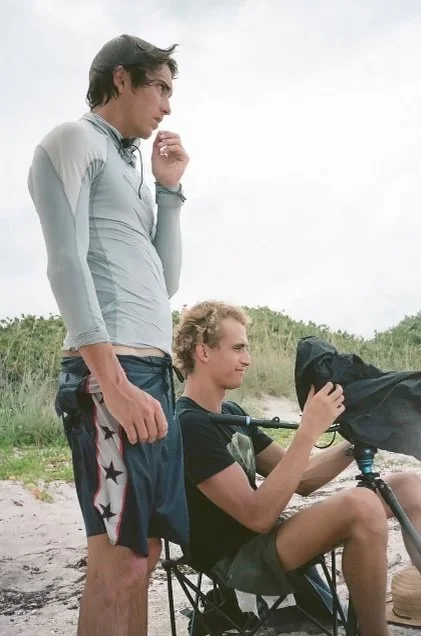Why Surf Photographers and Filmers are the Most Underappreciated Artists of This Generation
Surfing became a highly popularized and publicized sport in the late 90s and early 2000s. With the boom of the surf film and magazine industry, surfing quickly became a popular “aesthetic,” most notably remembered for the knee-length board shorts, tribal tattoos, buzzcuts, and Red Bull media houses. This boom opened the surf media industry to anyone, yet today surf photographers and filmmakers seem to be one of the more niche unknown parts of the surf community.
Image Courtesy: Marco Arcelin
Capturing the sport of surfing is a very delicate task and the artists who do it go through a tremendous amount of work to get their desired outcome The equipment required to capture surfing gets extremely complicated—not to mention expensive. Cameras cost thousands of dollars, and the attachments to go along with them can cost thousands more. Equipment aside, capturing an athlete moving around in water is no simple task. Everything affects the image quality; the lighting, visibility, weather, and, most importantly, wave conditions are all things the artists must worry about when capturing media.
South Florida surf filmmaker, Marco Arcelin, shares his frustrations with the timing and photo opportunity.
“Usually, the only time I can go shoot people surfing is 1-3 pm [because that’s when the waves are best], which is the worst time of day to shoot anything because the sun is right above you.”
Image Courtesy: Henry Bliss
Marco normally takes his filming approach from dry land, using his Sony A7S3 along with a 200-600 mm telephoto lens, all propped up on a tripod. Marco runs an Instagram page for his surf content (@Marco.ovdo) and creates content for his clients or surfer friends. Arcelin spends hours editing and splicing clips together.
“It takes me around 5-10 minutes to correct one shot, so If I made a video that is only 2 minutes long, it will take me at least an hour to fully edit it,” says Arcelin. The amount of time it takes to get surf media to the level where it’s shareable or postable often goes unnoticed. Artists have to spend hours behind a computer or editing software to get the images they spent hours capturing to a certain quality level.
Photographer Henry Bliss also knows what it’s like to spend time behind his iPad editing.
“I can work on one single photo for two or more hours,” says Bliss. Henry’s style of photos typically takes place underwater—a unique perspective that is rare to see around the South Florida area. Using underwater housing, photographers are able to bring their cameras into the water, opening up a whole new world of art. Bliss dove right into mastering the craft.
“Personally, I don’t think this is something everyone can do,” says Bliss, “I swam competitively my entire life, and I think if I didn’t have that background, I wouldn’t have the ability to be able to get these underwater shots.” Bliss has $12k-$15k invested into his equipment, and to bring that into the water puts a huge amount of trust in your equipment. He also has to be aware of things like the waves and the current, often treading water for 3+ hours in a full wetsuit, fins, and weight belts. Artists aren’t just risking damage to their thousands of dollars of equipment; they also risk their own safety and lives.
So how is it that these artists sacrifice so much of their time, energy, and skill for the surf community, yet it seems like they get the least amount of recognition? Marco had some interesting things to say about that.
“Almost always, the surfer or athlete is going to outshine the artist who took the clip,” says Arcelin. “At the same time, those surfers shine on the videographers. The surfers themselves and the community know who’s getting the shot, and they respect it.” Turns out, all the validation needed by these artists is the community response to their work. “We care more about the quality of our shot and if people are enjoying it,” added Arcelin.
Bliss also added to this idea saying, “Everybody loves photos of themselves, especially surfers. That initial reaction when you show them the pictures for the first time personally drives me to do what I do.”
Artists often go under appreciated for their work. Next time you see a sick shot of your favorite surfing bombing a set, give some love to the artist behind the camera. They go through a lot to make the magic happen.
Be sure to check out Henry Bliss’ work on Instagram (@henrybliss) and his website https://www.theearthisyourplayground.com/. As well as Marco Arcelin’s @Marco.ovdo.
Strike out,
Haley Dockendorff
Strike Magazine Boca
Haley Dockendorff is a Content Writer for Strike Magazine Boca. Loud and proud, this Virgo loves writing just about anything that will cause a bit of commotion. If you can’t find her, she’s probably somewhere on a beach with a camera in hand. You can reach her at haleydockendorff143@gmail.com



